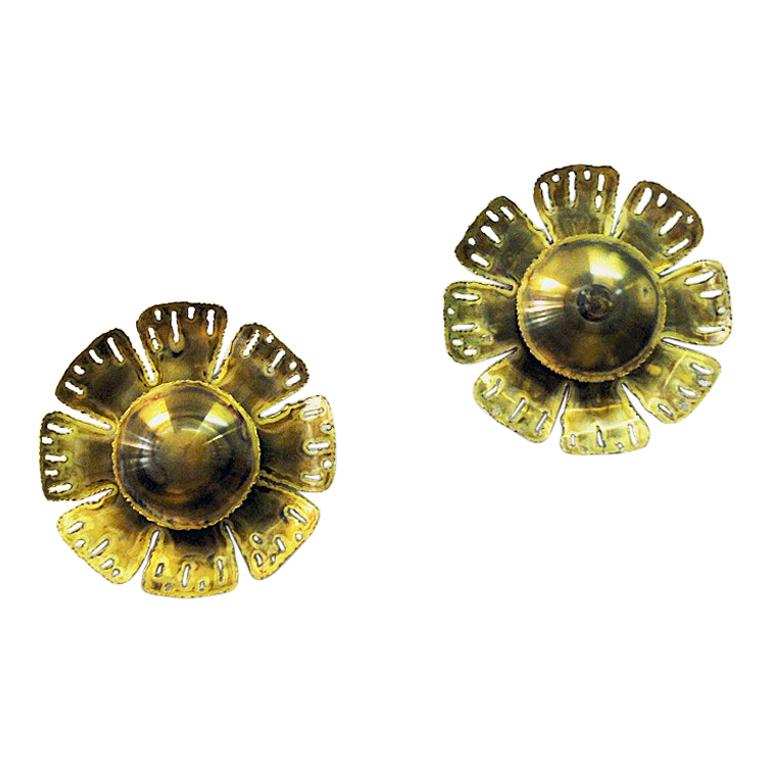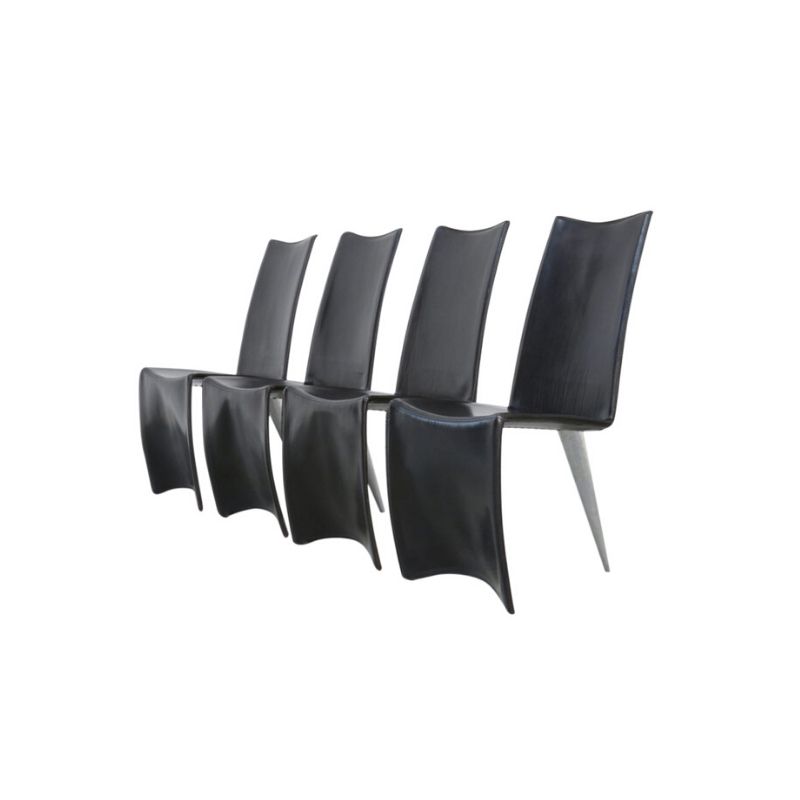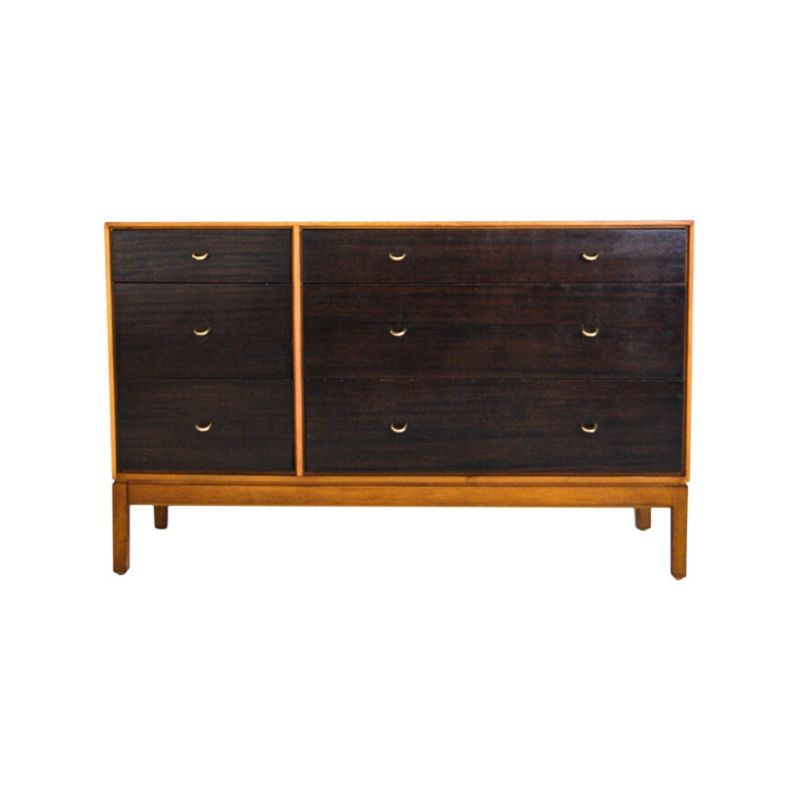I have a set of the black (aniline-dyed) ones, Herman Miller newish production, dated 2000. They're beginning to show scuffs around the edges where the plywood color shows through the dye, and I would like to touch these up. Anyone have advice on product and technique?
In the past, when it's been just a little edge nick here and there, I used a Sharpie, with good results. Now it's more like overall wear and a few legitimate scratches, enough that I need a better solution. I don't want to use paint.
.
The Sharpie is fine for the edge nicks as you say but the dead flat sheen of the surface will not touch up well. You might try mixing some sort of a translucent watercolor paint solution and daub/blot very carefully with a small brush and let dry to mute the impact of the worn areas.
I say that this sort of thing is just characteristic wear due to the qualities of the finish though, and you'd do perfectly well to just let the dust and grime and slime of daily use build up a little bit and leave it be as suggested above.
There are a number of options...
There are a number of options for touching this up. I would try Behlen Solar Lux Black for touch up and then brush on clear coat afterwards. You may have to apply two coats for opacity. Also Transtints could also work but you will need to mix it with a clear coat first. The easiest will be to purchase a spray can of black satin lacquer, spray it into a cup and then brush on. You may need to lightly wax with steel wool afterwards to even out the sheen. I have found that a Sharpie has a purple hue and is not a true black.
.
You could try a Minwax stain marker. I find the qrt/gallon stains unpredictable and mix my own, but the markers are very handy. My kitchen cabinets are flat front teak without hardware built in '62. I don't find nicks and scratches 'patina' or at all attractive. I keep minwax markers in the 'junk' drawer for quick fixes.
Because of the grain variety i have a few from light to a bit darker.
Worth a try. It will soak quickly into the scratched raw exposed wood. Test with a few taps on the scratch, just an inch, and immediately wipe off with a clean rag.
Give it time to dry at least an hour to see if it give the correct repair and color match. You could even test a bit of wax on that spot with a q-tip and buff.
(i prefer to test a spot or area underneath, not visible, first)
It is such a weak stain and heavily diluted with solvent that it is very forgiving, even the markers. If it is not black enough, another pass or two might just make a good match.
http://www.minwax.com/wood-products/maintenance-repair/minwax-wood-finis...
If you need any help, please contact us at – info@designaddict.com









